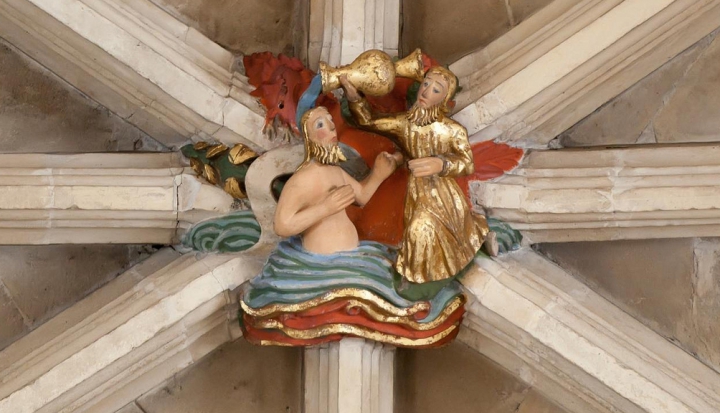The baptism of Jesus was more than just a symbolic swim.
Today some people think that Jesus had original sin and needed to have it washed away. When we think this, we take the reason we need to be baptized and apply it to Jesus. Jesus is sinless (Heb. 4:15). In the early church a minority of Christians known as “adoptionists” understood the baptism as the time when God “adopted” Jesus as his son. Condemned as a heresy at the end of the second century, this view re-emerged in later centuries. Adoptionists denied that Jesus is always both God and man. Some taught that Christ was a spirit which came to the human Jesus at his baptism, but then fled and left the human Jesus alone when it became time for him to die on the cross.
St. Thomas Aquinas reminded us that the baptism of Jesus by John was purely symbolic, unable to forgive sin or incorporate someone into the family of God. Thomas taught that when Jesus was baptized, he “consecrated” baptism, so to speak. In a similar way, Jesus’ presence at the wedding feast at Cana (John 2:1-11) can be seen as God’s blessing on marriage.
In his book Jesus of Nazareth, Pope Benedict XVI wrote, “ In light of the cross and resurrection, the Christian people realized what happened: Jesus loaded the burden of all mankind’s guilt upon his shoulders; he bore it down into the depths of the Jordan.” In Philippians 2:5-11, St. Paul describes the willingness to humble himself that the Son of God showed by taking on himself our human nature and its burden of sin. The Catechism of the Catholic Church says: “Jesus’ gesture [of submitting to baptism] is a manifestation of self-emptying. The Spirit who had hovered over the waters of the first creation descended then on the Christ as a prelude to the new creation, and the Father revealed Jesus as ‘his beloved Son’ ” (no. 1224).
The early Eastern church fathers, more poetic than their Western counterparts, wrote that Adam and Eve had a “vestment of light.” Lost at the fall, this robe was made available again when Jesus placed the robe, lost in paradise, in the Jordan River at his own baptism. For example, the Eastern father St. Gregory of Nyssa prayed, “You have driven us out of paradise and called us back; you have taken away the fig leaves, that garment of our misery, and clothed us once more with the robe of glory.” We discover in the Jordan (the baptismal font) the robe of glory that had been humankind’s garment in paradise. Poetically, the Eastern fathers had Jesus explain his need for baptism: “I am trying to find the lost Adam, let me go down and look for him.”
Both Western and Eastern theologies tell us that Jesus was baptized not for his own benefit, but for ours.
This article appeared in the January 2014 issue of U.S. Catholic (Vol. 79, No. 1, page 46).
Have a question you’d like to get answered? Ask us at editors@uscatholic.org!
Image: Flickr photo cc by Art History Images (Holly Hayes)












Add comment